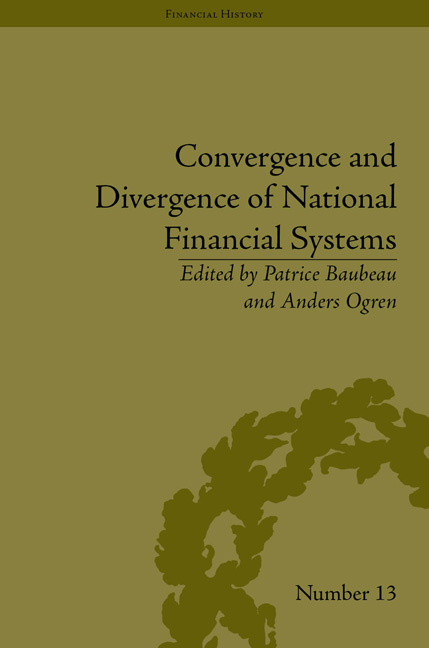 Convergence and Divergence of National Financial Systems
Convergence and Divergence of National Financial Systems Book contents
Introduction
Summary
Finance and the Economy
Although they have a very long history, academic studies of financial structures have developed in three general steps apparently sound assumptions during the last fifty years or so.
The first step came after World War I and in the wake of the Great Depression, as a sustained effort to establish reliable data series, while new theories were being put forward, to explain the collapse of the gold standard, as well as the economic gyrations that followed World War I. Thus motivated, states and central banks tried to institute new institutional designs, as during the so-called great conferences of Genoa (1922), London (1933) or Bretton Woods (1944). This set the stage for an international drive towards more comprehensive, reliable and comparable statistics covering monetary and financial matters. At the same time, central banks all over the developed world engaged into more academic-like research, leading to a serious upheaval of both the quantity and quality of their published material, even on a retrospective basis. But whether the institutions were ill-designed or the goal of a Gold-standard built-in balancing mechanism was an illusion, these conferences were mostly in vain, failing to design stable and enduring international monetary and financial systems. At best they ended up with a temporary alleviation of the main problems but succeeded in creating multilateral institutions whose usefulness would prove to be well beyond the scope of their original charters, such as the BIS, the World Bank or the IMF.
Building upon this new ideas and data, a general reappraisal of past monetary and financial history marked the 1960s. Milton Friedman, Anna Schwartz and Philip Cagan at the NBER were among the main contributors to this second step, but they were joined by many, most notably John Gurley and Edward Shaw, Alexander Gerschenkron and Raymond Goldsmith. Economic history started then to accumulate many documented cases and new pools of data related to financial issues, banks and crises. But the last two authors provided economist historians with two key elements.
- Type
- Chapter
- Information
- Convergence and Divergence of National Financial SystemsEvidence from the Gold Standards, 1871–1971, pp. 1 - 8Publisher: Pickering & ChattoFirst published in: 2014
